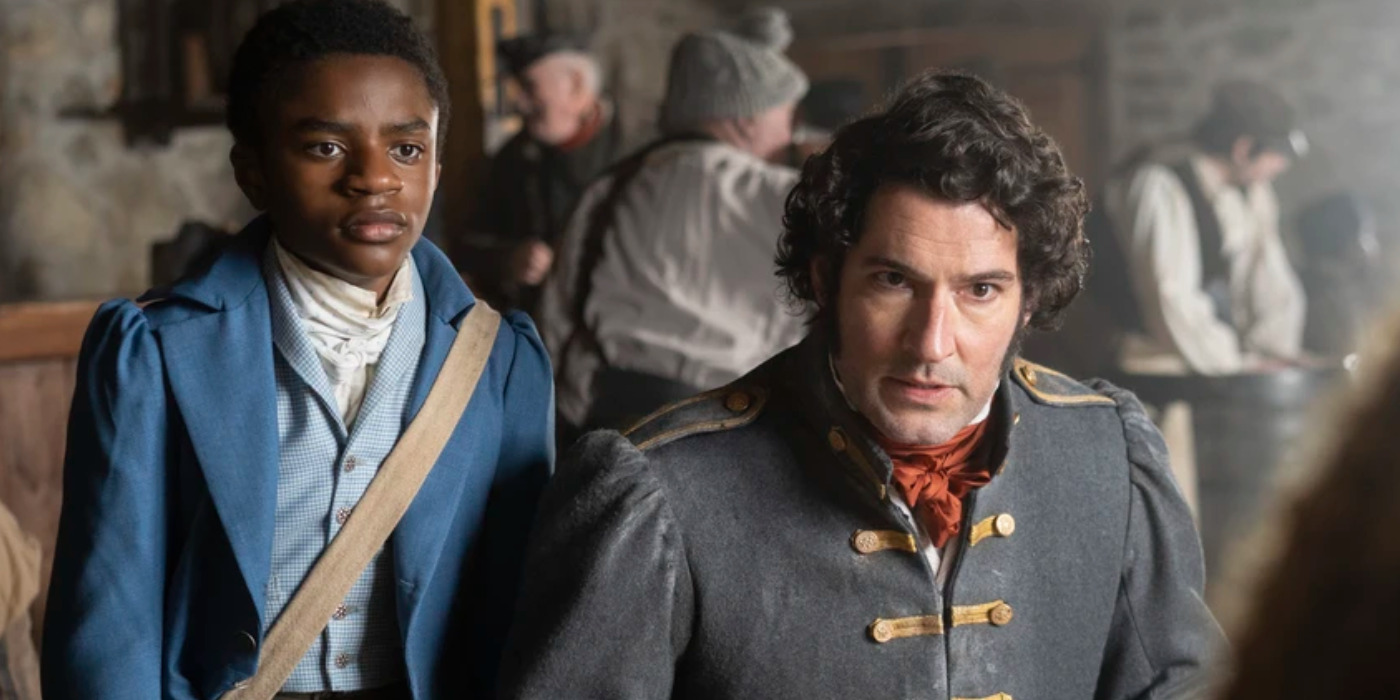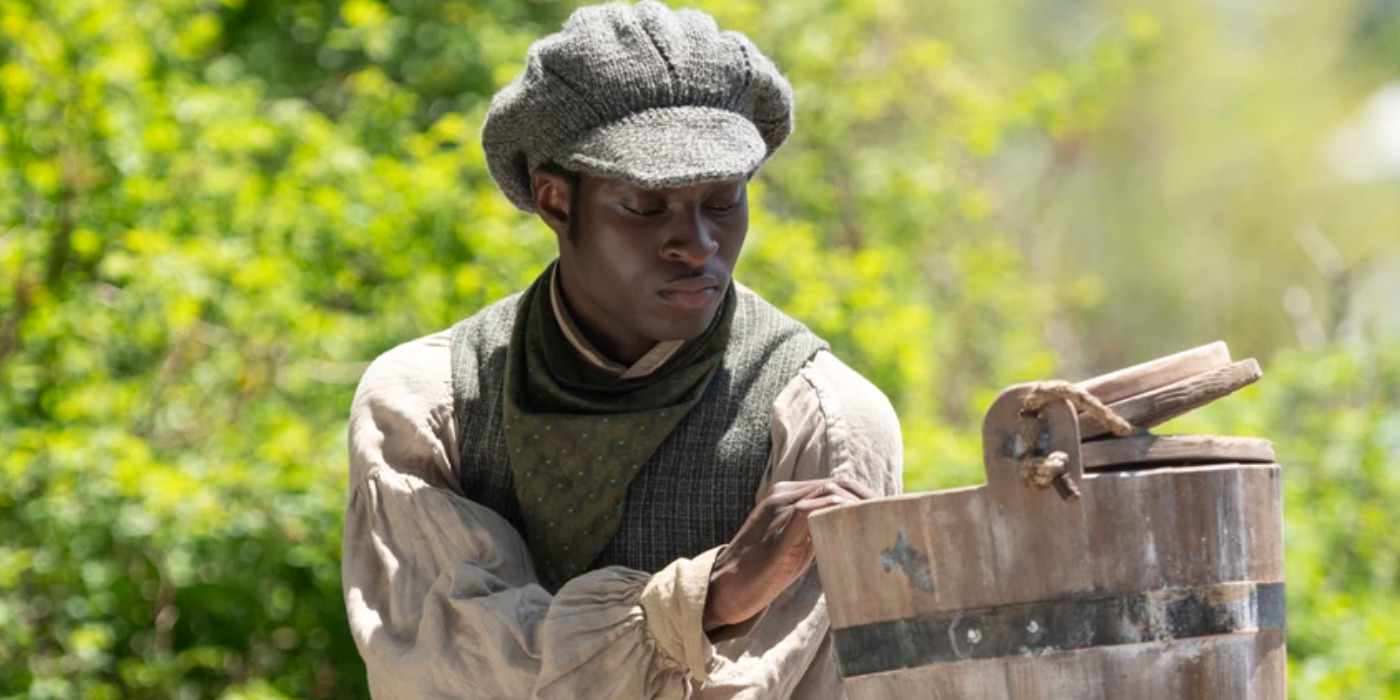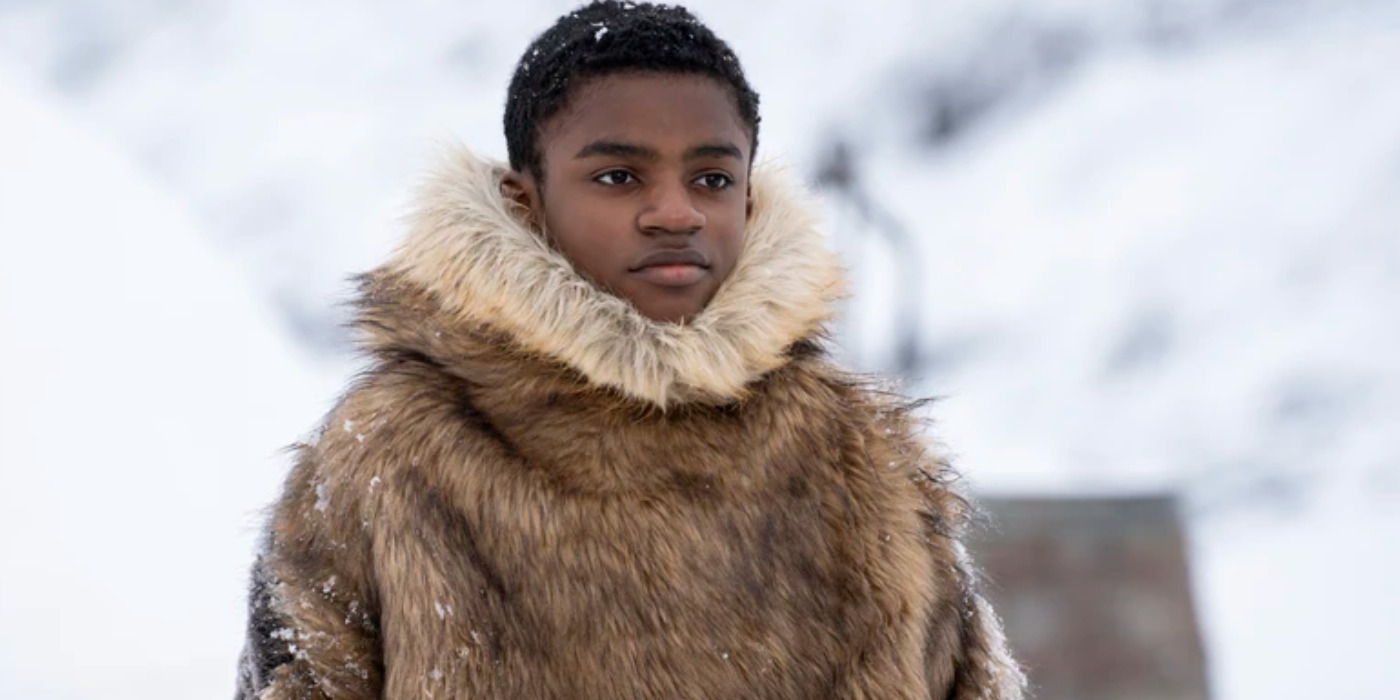Hulu’s ‘Washington Black’ is a period drama in which an optimistic spirit embarks on fascinating adventures on his journey toward true freedom. Created by Selwyn Seyfu Hinds, the show follows a dual timeline, both helmed by the titular protagonist George Washington “Wash” Black. The young boy finds his beginning in a Barbados sugar cane plantation, where he catches the eye of the land owner’s brother, Christopher’ Titch’ Wilde. The eccentric inventor, an abolitionist by beliefs, takes a liking to young Wash’s clever mind and appoints him as his assistant for scientific endeavors. Nonetheless, a tragedy on the plantation forces the duo to run away with danger biting at their ankles at every turn.
Years later, Wash finds himself lying low in Nova Scotia, still keeping his and Titch’s dreams of creating a Cloud Cutter alive. Yet, his inescapable past continues to loom over his head, forcing him to continue to pursue freedom. The show takes the viewers on a thrilling journey across the globe circa 1830s, with socio-political strife ripe in the air. Even so, despite its historical setting, the story remains laced with themes of the wonders of discoveries, both in terms of science and the self.
A Historical Case Inspired Author Esi Edugyan to Write Washington Black
‘Washington Black’ is a work of historical fiction adapted from the pages of Esi Edugyan’s eponymous 2018 novel. Initially, during its earliest development, the novel was headed down a much different path. The Canadian author, known for her compelling works on Black history, was all set to pen a book about the infamous Tichborne case. The case, one of the lengthiest trials in the history of English courts, revolved around a set of claims made by an individual around the late 1860s. The case involved one Arthur Orton (otherwise known as the “Tichborne Claimant”), who claimed to be Roger Tichborne. The latter was the Tichborne noble family’s heir who was presumed to have died in a shipwreck. Nonetheless, the Australian butcher laid his claim to the identity.

After Lady Tichborne, Roger’s mother, learned of Orton’s assertions, she sent Andrew Bogle, a former slave, to identify and retrieve the Claimant. Since the latter was under the servitude of the Tichborne and was familiar with Robert, his identification of the butcher as the noble family heir played a crucial role in the case. Nevertheless, in time, his contribution toward providing Orton information about the family during the trials became a center of speculation. Ultimately, the unique relationship between the Tichborne Claimant and Bogle turned into a notable point of inspiration and influence for Edugyan. The author was fascinated by the “complexity of the relationship between the colonizer and the colonized.” Furthermore, she wanted to explore the intricacies of a self-actualization journey within the same context.
In a Q&A with The Booker Prizes, Edugyan discussed this connection further. She shared, “I discovered that it was actually the voice of its narrator (in the Tichborne case) that interested me most, the complicated position of a man who’d been randomly transported from the violent world of his childhood to places that were racially, socially, and geographically different from all he’d known. This is what I took from that initial idea.” Consequently, even though the novel, and by association the show, chart a narrative worlds apart from the reality of the Tichborne case, George Washington Black’s character and his journey remain inherently linked to the same.
Washington Black Adapts the Novel Through an Optimistic Lens
For the most part, ‘Washington Black’ remains an authentic adaptation of Esi Edugyan’s novel. Both the show and the novel center around Wash’s adventures over the course of multiple years, during which he travels to various corners of the world. Creator Selwyn Seyfu Hinds, who helmed the screenwriting along with his team of writers, was inspired to take on the project due to his own love for the source material. Hinds came across the novel in his teenage years. At the time, the young immigrant from the Caribbean was used to constantly uprooting his life to move around places in search of new experiences and opportunities. The same, paired with his family’s origins from Barbados, naturally compelled the creator to find a sense of alliance between himself and the literary hero. Even though Wash’s circumstances and his history are much bleaker, the nucleus of his story remains something he could easily relate to.

Consequently, Hinds felt drawn to adapt the project for the screen. In doing so, the creator and his crew took some creative liberties, creating some points of distinction between their version of the tale and Edugyan’s book. Most notably, the show strives to highlight the themes of hope and escapism that the source material significantly underlines. However, as the on-screen story tackles these idealist topics, it keeps the narrative grounded in the reality of history. When discussing the show with UPI, Hinds said, “An evergreen journey for humans is to find hope and find kindness and joy, and it just feels extra-relevant in times that feel tough. It’s (The show’s) not just empty-calorie escapism. It’s sort of like escapism with a thematic purpose.”
George Washington Black’s Story as an Inventor is a Work of Historical Fiction
In ‘Washington Black,’ the bright-eyed protagonist begins his story on the fields of a plantation in Barbados and goes on to become a scientist in his own right. The show depicts his early apprenticeship under Titch’s tutelage and beyond, as he goes on to create inventions on his own in Nova Scotia. While his most beloved invention, the steam-powered balloon aircraft, remains an improved version of his and Titch’s efforts, he also finds unique passions of his own in marine biology. In fact, he goes on to create the first aquarium of the time as his relationship with Tanna and her father, Mr. Goff, progresses.

Author Esi Edugyan developed these facts about her protagonist’s characterization with great care and attention. She employed in-depth research into the 1800s and the reality of the historical period’s scientific endeavors. Consequently, different aspects of the story’s scientific world are closely connected to real life. Nonetheless, Wash’s place in the history of these inventions predictably remains a work of fiction. Inventions like the hot air balloon and the aquarium all emerged from the 1800s. Yet, their inventors behind these creations share little in common with Wash and his tale. Therefore, much like Andrew Bogle, these historical inventors can also only be small sources of influence in George Washington Black’s character. Ultimately, there’s no direct real-life counterpart behind the character, rendering him a complete work of fiction.
Read More: Washington Black Ending Explained: Why did Titch Abandon Wash?


